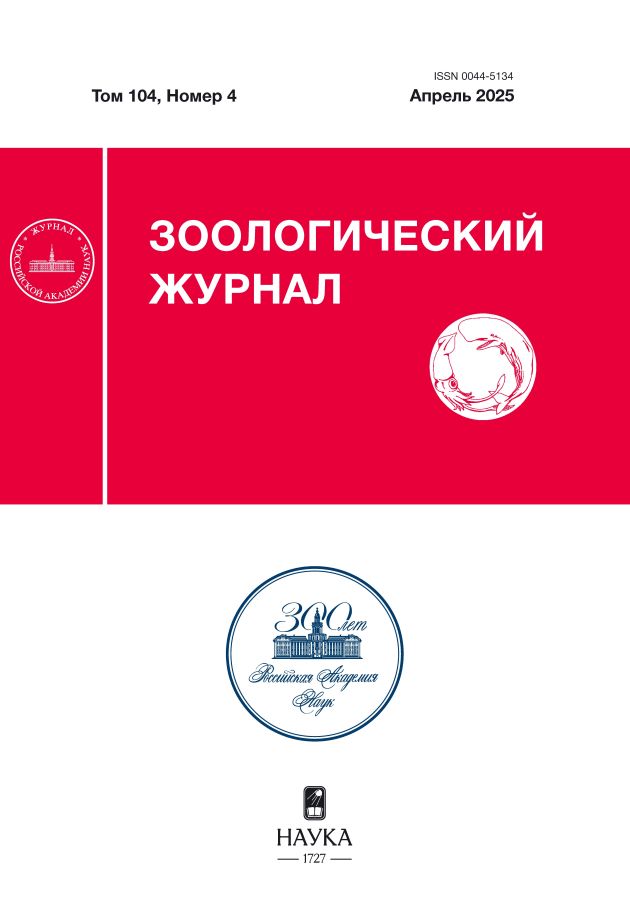Описание широко известного западнопалеарктического вида рода Reptalus Emeljanov 1971 (homoptera, auchenorrhyncha, fulgoroidea, cixiidae), не имеющего валидного названия
- Авторы: Тишечкин Д.Ю.1, Емельянов А.Ф.2
-
Учреждения:
- Московский государственный университет имени М.В. Ломоносова
- Зоологический институт РАН
- Выпуск: Том 103, № 3 (2024)
- Страницы: 44-51
- Раздел: Статьи
- URL: https://permmedjournal.ru/0044-5134/article/view/654305
- DOI: https://doi.org/10.31857/S0044513424030057
- EDN: https://elibrary.ru/VCHWYK
- ID: 654305
Цитировать
Полный текст
Аннотация
Приведено иллюстрированное описание Reptalus salicinus sp. n., ранее ошибочно интерпретированного как R. quinquecostatus. Приведены осциллограммы призывных сигналов самцов, а также данные о кормовых растениях и распространении нового вида и близкородственного R. аrtemisiae. Обозначен неотип R. artemisiae. R. salicinus sp. n. и R. artemisiae схожи по внешней морфологии и строению гениталий самца, но отчетливо различаются по временнόй структуре призывных сигналов и кормовой специализации и, таким образом, представляют собой разные биологические виды. Ареал R. salicinus sp. n. охватывает юг европейской части России, Казахстан и, по-видимому, южную часть Западной Европы. R. artemisiae до сих пор был найден только в Нижнем Поволжье и Западном Казахстане.
Полный текст
Об авторах
Д. Ю. Тишечкин
Московский государственный университет имени М.В. Ломоносова
Автор, ответственный за переписку.
Email: macropsis@yandex.ru
биологический факультет
Россия, Москва, 119234А. Ф. Емельянов
Зоологический институт РАН
Email: alexandr.emeljanov@zin.ru
Россия, Университетская набережная, 1, Санкт-Петербург, 199034
Список литературы
- Becker A., 1865. Naturhistorische Mitteilungen // Bulletin de la Société Impériale des Naturalistes de Moscou. V. 37. № 2. P. 477–493.
- Biedermann R., Niedringhaus R., 2009. The Plant- and Leafhoppers of Germany. Identification key to all species. Bremen: Wilhelm Brüggemann GmbH. 409 p.
- Dufour L., 1833. Recherches anatomiques et physiologiques sur les Hémiptѐres, accompagnées de considérations relatives а l’histoire naturelle et а la classification de ces insectes // Mémoires des Savants étrangers de l’Académie Royale des Sciences de l’Institut de France. V. 4. P. 129–462, pl. 1–19.
- Emeljanov A.F., 1971. Новые роды цикадовых фауны СССР из семейств Cixiidae и Issidae (Homoptera, Auchenorrhyncha) // Энтомологическое обозрение. Т. 50. № 3. С. 619–627. [in Russian with English summary]. [English translation: New genera of leafhoppers of the families Cixiidae and Issidae (Homoptera, Auchenorrhyncha) in the USSR // Entomological Review. 1971. V. 50. № 3. P. 350–354].
- Emeljanov A.F., 2015. Planthoppers of the family Ci- xiidae of Russia and adjacent territories. St. Petersburg–Moscow: KMK Scientific Press Ltd. 253 p. [in Russian].
- Emeljanov A.F., 2020. Nomenclatorial changes in the family Cixiidae (Homoptera, Auchenorrhyncha, Fulgoroidea), with fixation of type species of the genus Reptalus Emeljanov, 1971 and description of a new subgenus // Zootaxa. V. 4780. № 1. P. 197–200.
- Fieber F.X., 1872. Katalog der europäischen Cicadinen, nach Originalien mit Benützung der neuesten Literatur. Wien: Carl Gerold’s Sohn, iv + 19 p.
- Holzinger W.E., Kammerlander I., Nickel H., 2003. Fulgoromorpha, Cicadomorpha excl. Cicadellidae: The Auchenorrhyncha of Central Europe / Die Zikaden Mittleuropas. Leiden: E.J. Brill. 673 p.
- ICZN, 1999. International Code of Zoological Nomenclature, 4th edition. London: The International Trust for Zoological Nomenclature. xxix, 306 p.
- Logvinenko V.N., 1975. Fulgoroidny cikadovy Fulgoroidea [Planthoppers Fulgoroidea] // Fauna Ukrainy. V. 20. № 2. P. 1–287. [In Ukrainian]
- Mityaev I.D., 2002. Fauna, ecology, and zoogeography of leafhoppers (Homoptera, Cicadinea) of Kazakhstan // Tethys Entomological Research. V. 5. P. 1–170. [In Russ.]
- Nast J., 1987. The Auchenorrhyncha (Homoptera) of Europe // Annales Zoologici. V. 40. № 15. P. 535–561.
- Tishechkin D.Y., 2013. Использование биоакустических признаков для различения криптических видов насекомых: возможности, ограничения, перспективы // Зоологический журнал. Т. 92. № 12. С. 1417–1436 [in Russian with English summary]. [English translation: The use of bioacoustic characters for distinguishing between cryptic species in insects: potentials, restrictions, and prospects // Entomological Review. 2014. V. 94. № 3. P. 289–309].
- Webb M.D., Ramsay A.J., Lemaître V.A., 2013. Revealing the identity of some early described European Cixiidae (Hemiptera: Auchenorrhyncha) – a case of ‘forensic’ taxonomy; two new combinations and a name change for Reptalus panzeri in Britain // Acta Musei Moraviae, Scientie biologicae (Brno). V. 98. № 2. P. 57–95.
Дополнительные файлы















